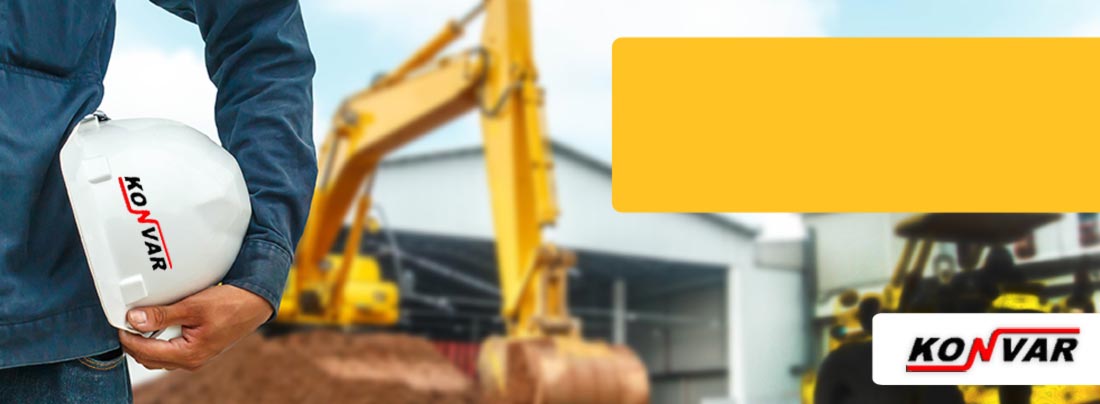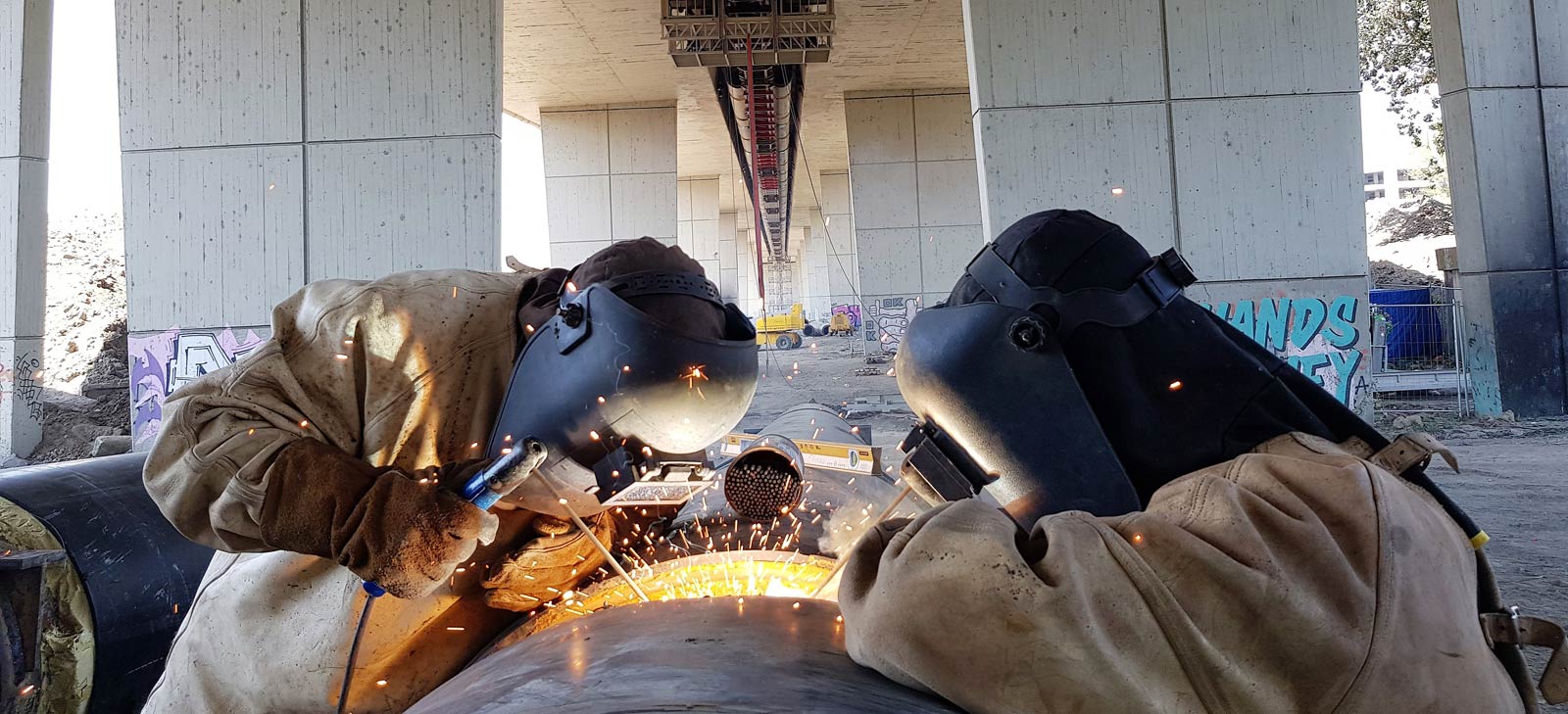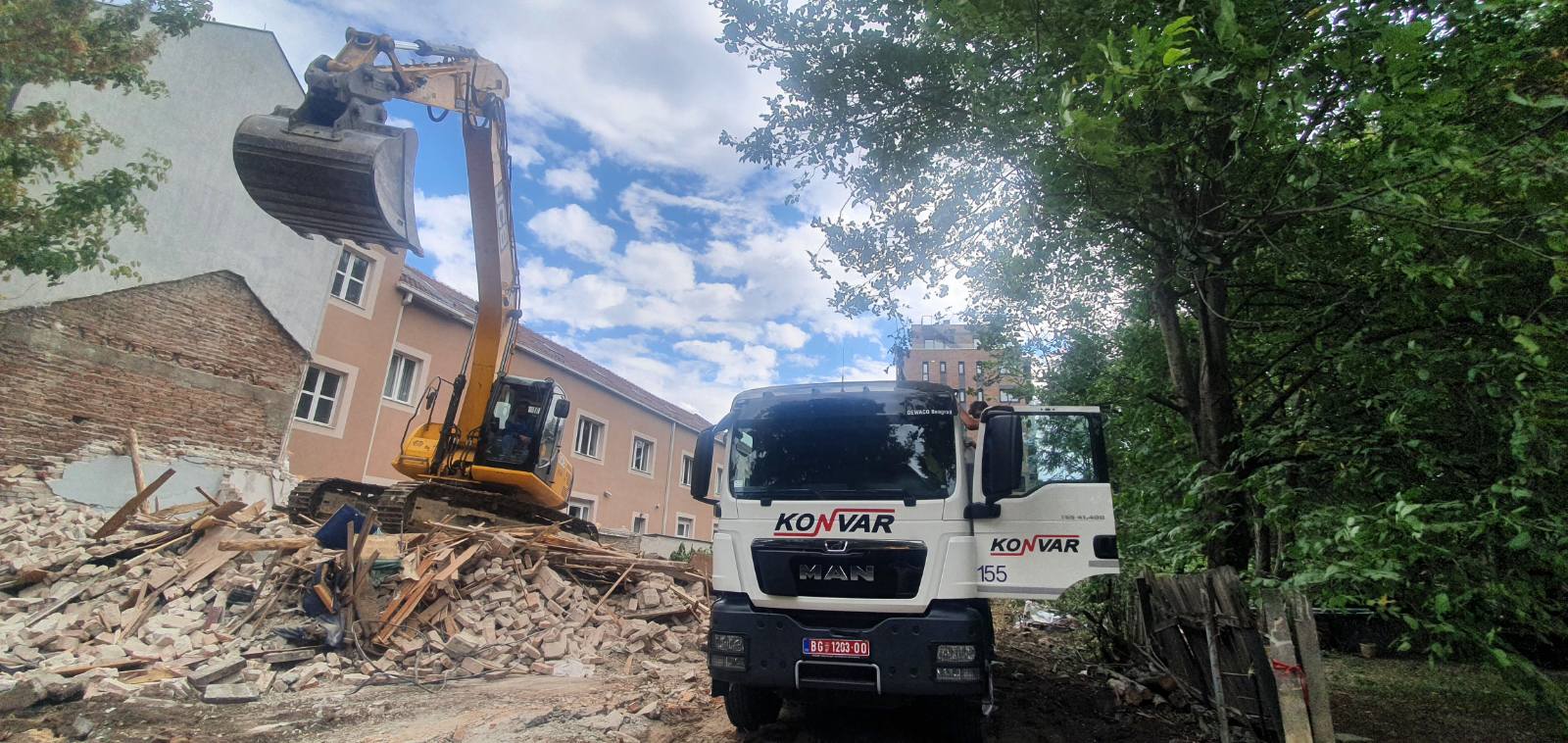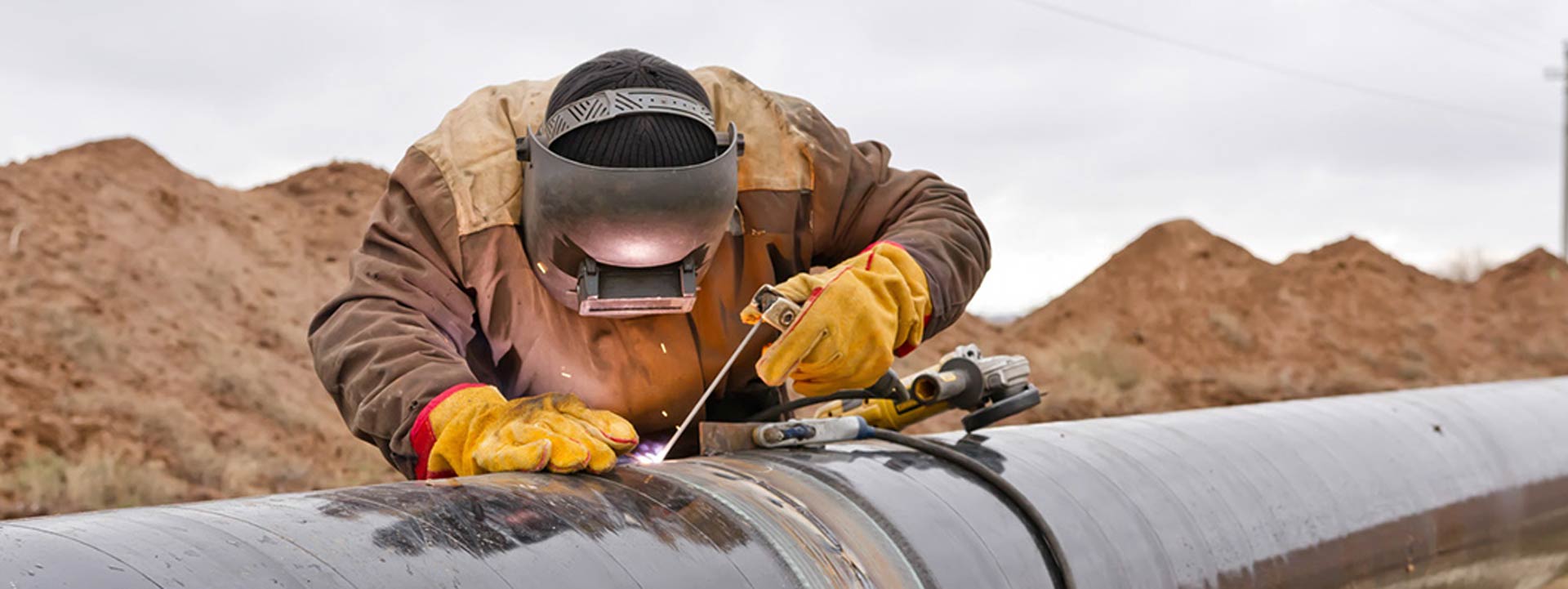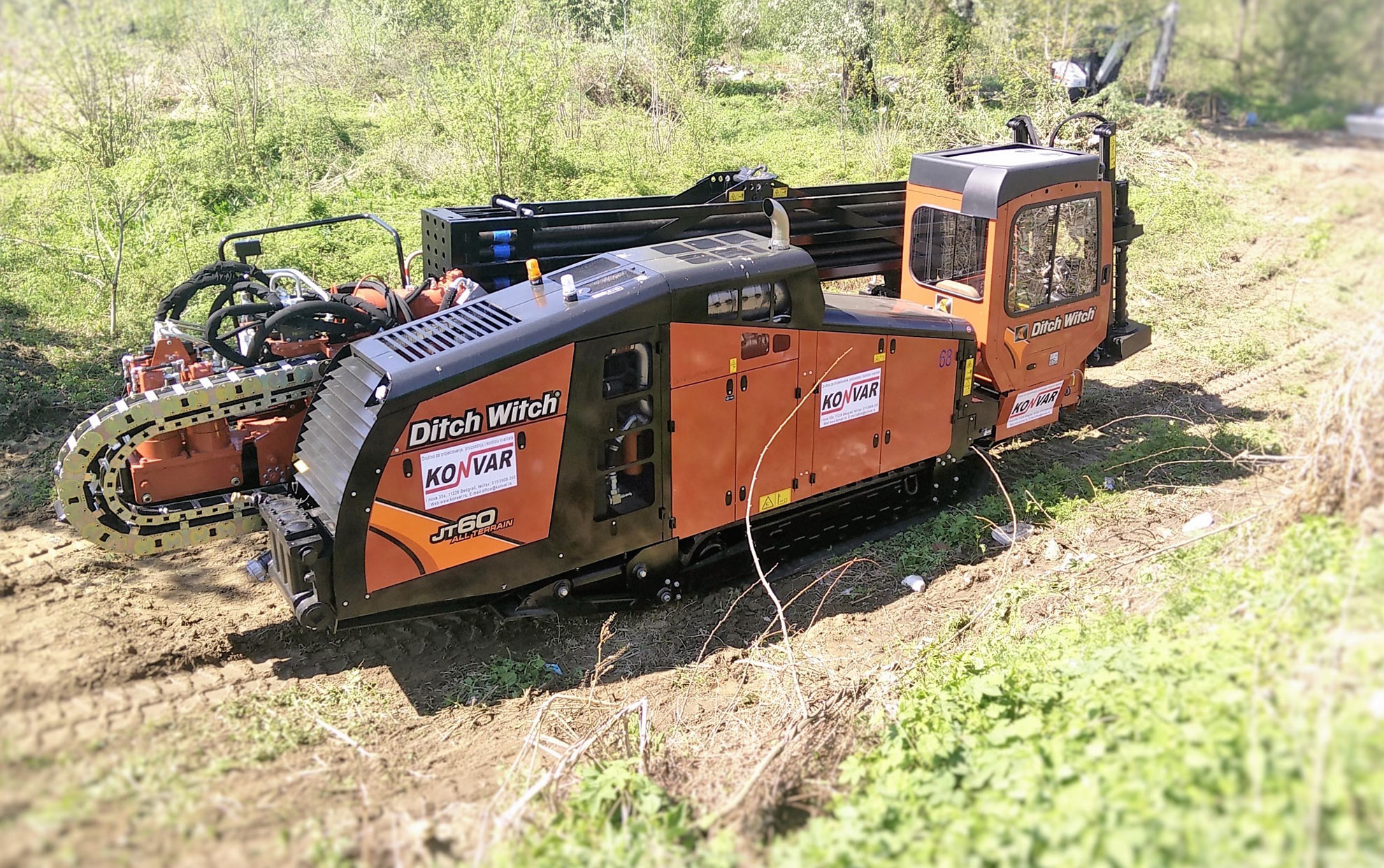The company "Konvar" has accreditation certificate for testing laboratories of the Accreditation Board of Serbia according to SRPS ISO / IEC 17025: 2006 for the activities for testing of metallic materials, welded joints, steel castings, pipelines and gas installations.
The lab used the following test methods:
Visual inspection
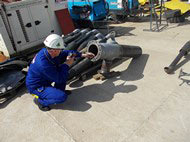 Before any other methods for testing welded joint, we apply visual inspection (VT). This method of testing is relatively inexpensive, does not take much time, and can provide very useful information on the quality of welded joints and on the necessary tests or other methods. For help with the visual inspection in the tight and difficult accessible parts of the structures we use different equipment (cameras, endoscopes, mirrors, magnifying glass, etc.).
Before any other methods for testing welded joint, we apply visual inspection (VT). This method of testing is relatively inexpensive, does not take much time, and can provide very useful information on the quality of welded joints and on the necessary tests or other methods. For help with the visual inspection in the tight and difficult accessible parts of the structures we use different equipment (cameras, endoscopes, mirrors, magnifying glass, etc.).
Liquid penetrant testing
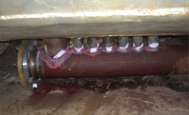 Liquid penetrant testing (PT) or penetrant testing is a method often used for the testing of welded joints in constructions, this method detects surface irregularities of weld. On the previously cleaned and degreased surface we apply penetrant (usually red). After penetration into the eventual crack we remove penetrant appropriately (water, dry cloth). After drying the surface we apply a deployer (usually white), then the deployer draws penetrant from the cracks, and on the white surface of the sheet it is easily visible red indication of the penetrant from the cracks.
Liquid penetrant testing (PT) or penetrant testing is a method often used for the testing of welded joints in constructions, this method detects surface irregularities of weld. On the previously cleaned and degreased surface we apply penetrant (usually red). After penetration into the eventual crack we remove penetrant appropriately (water, dry cloth). After drying the surface we apply a deployer (usually white), then the deployer draws penetrant from the cracks, and on the white surface of the sheet it is easily visible red indication of the penetrant from the cracks.
Magnetic testing
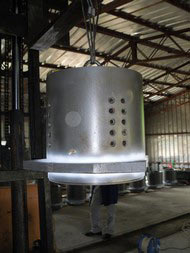
Ultrasonic testing
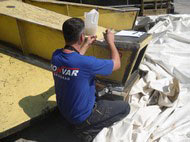 Ultrasonic quality control (UT), belongs to the volumetric methods, based on the capacity of ultrasound to spread through homogeneous materials and it bounces on the border of materials of different acoustic properties (resistance), or from inhomogeneities (defects) in the material. From sources of ultrasound spread ultrasonic waves through the material to be controlled. If there is a fault in the material, behind her will be, depending on the type of error, ultrasonic waves weaken or not appear (the refuse of error).
Ultrasonic quality control (UT), belongs to the volumetric methods, based on the capacity of ultrasound to spread through homogeneous materials and it bounces on the border of materials of different acoustic properties (resistance), or from inhomogeneities (defects) in the material. From sources of ultrasound spread ultrasonic waves through the material to be controlled. If there is a fault in the material, behind her will be, depending on the type of error, ultrasonic waves weaken or not appear (the refuse of error).
Radiographic testing
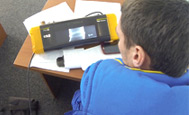 Radiographic inspection (RT) is a volumetric method of testing materials used gamma rays (radioactive isotopes Ir-192 and Se-75) and X-rays (X-ray). Radiographic examination found great use in determining internal defects and general material inhomogeneity. This examination is based on the ability of gamma rays and X-rays passing through the different materials. While the penetration of air through the metals leads to their absorption, ie low beam. This weakening is less if the rays encounter errors and inhomogeneities, ie then decreased absorption. Gamma and X-rays leave no trace on the film emulsion (industrial foil), for which it is based and radiographic testing errors in interior materials.
Radiographic inspection (RT) is a volumetric method of testing materials used gamma rays (radioactive isotopes Ir-192 and Se-75) and X-rays (X-ray). Radiographic examination found great use in determining internal defects and general material inhomogeneity. This examination is based on the ability of gamma rays and X-rays passing through the different materials. While the penetration of air through the metals leads to their absorption, ie low beam. This weakening is less if the rays encounter errors and inhomogeneities, ie then decreased absorption. Gamma and X-rays leave no trace on the film emulsion (industrial foil), for which it is based and radiographic testing errors in interior materials.
Ultrasonic thickness measurement
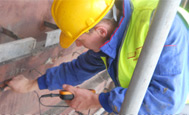 Ultrasonic thickness measurement of materials (UdT), is a method that allows easy and quick measurement of material thickness when access to the material is possible only with one side. It is based on precise measurement of time it takes the wave (generated from the probe) passes through the material and return to the transducer. Equipment used to measure the thickness of the ultrasonic thickness meter with probes.
Ultrasonic thickness measurement of materials (UdT), is a method that allows easy and quick measurement of material thickness when access to the material is possible only with one side. It is based on precise measurement of time it takes the wave (generated from the probe) passes through the material and return to the transducer. Equipment used to measure the thickness of the ultrasonic thickness meter with probes.
Measuring the hardness of the material
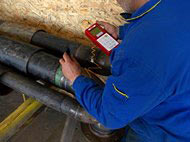 A method that allows easy and convenient determination of material hardness using a portable device along with the option to show results in different units (Rockwell, Brinell, Vickers).
A method that allows easy and convenient determination of material hardness using a portable device along with the option to show results in different units (Rockwell, Brinell, Vickers).
Testing of isolation by method of dielectric strength
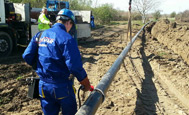 The method of testing the quality of insulation is used to test the quality of the insulation layer supported on the metal surfacewhich is used as a protection against corrosion. As an indicator of the quality of the applied layer, in this case serves its resistance to dielectric to a set voltage.
The method of testing the quality of insulation is used to test the quality of the insulation layer supported on the metal surfacewhich is used as a protection against corrosion. As an indicator of the quality of the applied layer, in this case serves its resistance to dielectric to a set voltage.
Testing by pressure of gas pipelines and gas installations
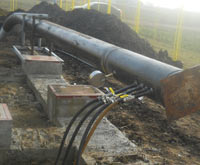 Method of test to examine pipelines and gas installations, by raising the pressure is tested tightness and strength of building.
Method of test to examine pipelines and gas installations, by raising the pressure is tested tightness and strength of building.
Metallographic testing method of replicas
This method of using a metallographic replicas gives print of material microstructure. A review of replicas using a microscope leads to data on the microstructure. Metallographic analysis can provide information on the composition of the material, pre-treatment and properties, in particular:
- crystal grain size
- present stage
- chemical homogeneity
- distribution phase
- deformation structures formed after the plastic deformation of materials
- determination of cracks and fracture modes
https://www.konvar.rs/en/activities/item/20-testing-laboratory.html#sigProId2eeb68b568
